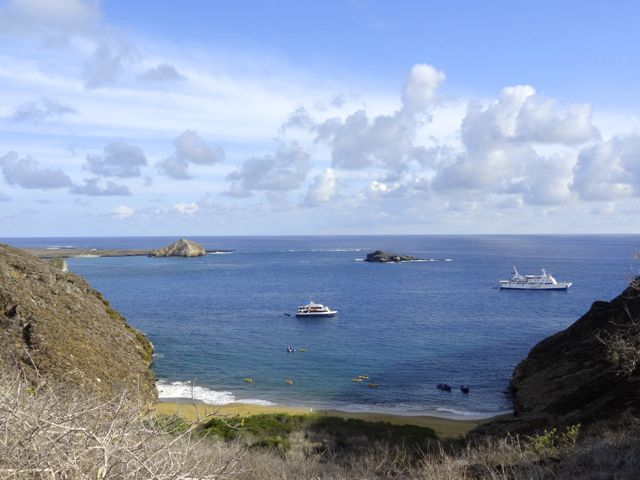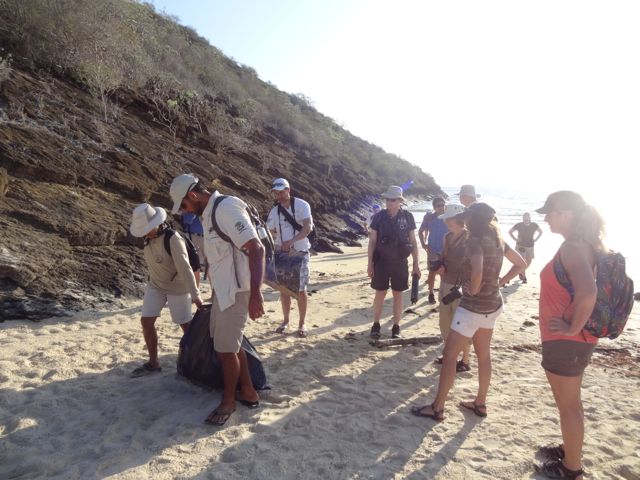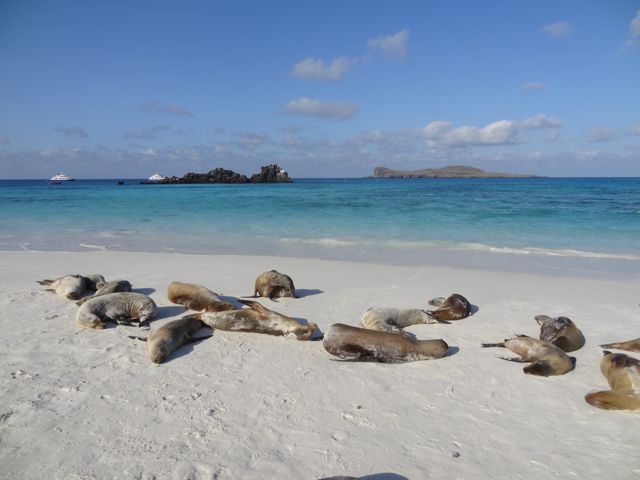Often times, once a destination gains popularity, tour companies and travelers pour in from around the world, threatening the sanctity of the place. Finding a balance between allowing for outside visitors and not destroying the natural habitats, can be a challenging feat. It was however, humbling to see the extent of preservation initiatives in the Galapagos National Parks of Ecuador during my recent visit.
First, I found that tour operators must pay a significant license fee to the park to obtain permits. These can range from $25-100k, depending on how many guests the tour agency plans to bring per year and how much they charge per person. Once the National Park gives permissions to visit the Galapagos Islands, they assign itineraries that must be strictly followed. This means that the tour companies are told which routes to take, which islands they can visit at what times of day, how long to spend there, etc. By doing so the Park ensures that visitors don’t constantly walk around in the same areas and disturb the wildlife each and every day. It also means that tour operators cannot travel the same route two consecutive weeks and have to offer different programs to their clients.

Visiting Galapagos Islands by small to medium size cruise ships is very popular. This is largely due to the huge range of cruise holidays available. Private boats can be arranged for 10+ passengers, while most vessels are designed for 16. There are also a few ships that take 100 passengers at a time. Unlike other cruise docks, the ships and boats in the Galapagos are only allowed to anchor themselves far from land. Most islands do not have a port, so transfers have to be made via water landing. Even the islands that have small ports, such as San Cristobal and Santa Cruz, allow only fishing boats to be parked near the docks. You have to be very cautious of this area due to it not having a port because accidents or injuries may occur that could be fatal, if this were to happen to a traveller then its best to seek medical help as well as reaching out to a specialist lawyer. And if you’re a worker on the boat and are also involved in the accident then you should get in contact with maritime attorneys. When travelers get out for day excursions, they have to transfer from the cruise boat to land via panga (dinghies). Even when going kayaking and snorkeling, they have to jump off the panga at the sites. As a result, you could see sea lions, iguanas and pelicans welcoming visitors at every island. It seems they did not feel threatened by humans, as the boats here do not produce loud noises or oil spills.
Thirdly, naturalists who work for the park accompanied the tourists throughout their tours. It is required by the Park to have at least 1 naturalist for every 16 passengers, although companies like Ecoventura organize 2. They not only educate visitors about the flora, fauna and history of the Galapagos, but also act as eyes and ears of the park. They made sure that the humans did not touch the animals, walked off the trails or wandered on their own. The naturalists were required to report any hazards seen on the islands to the park authorities.
While most islands in the Galapagos looked pristinely beautiful with white sand beaches and turquoise blue waters, water currants would occasionally bring debris on to shore. It was good to see that the naturalists made sure to collect any garbage they saw. They even asked the passengers to collect it during our excursion and took it back to the boat for proper disposal.
 Read more about the sustainability efforts of the Ecuador based cruise ship company, Ecoventura.
Read more about the sustainability efforts of the Ecuador based cruise ship company, Ecoventura.
Read more about our experiences with the Galapagos Sea Lions.

